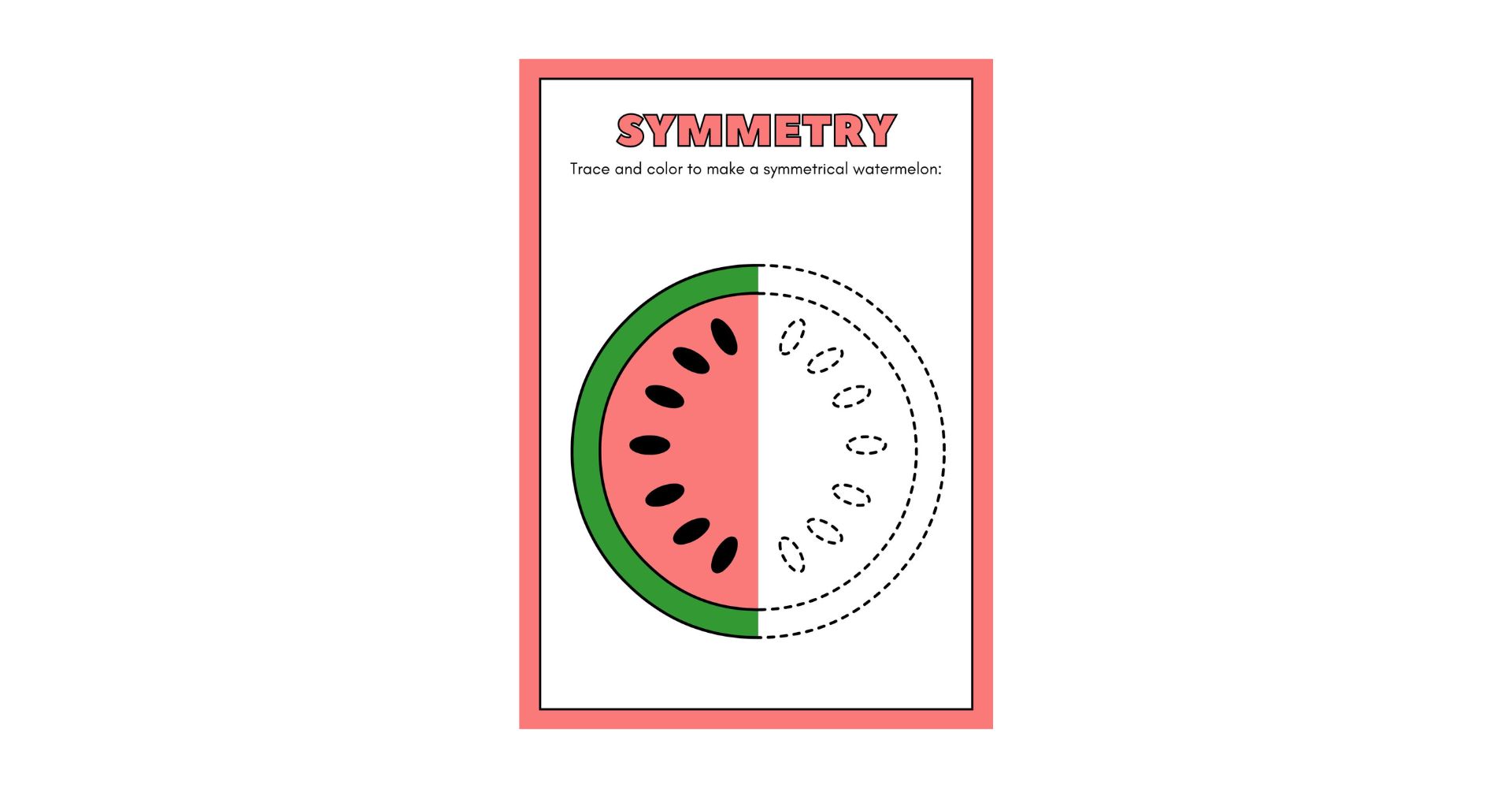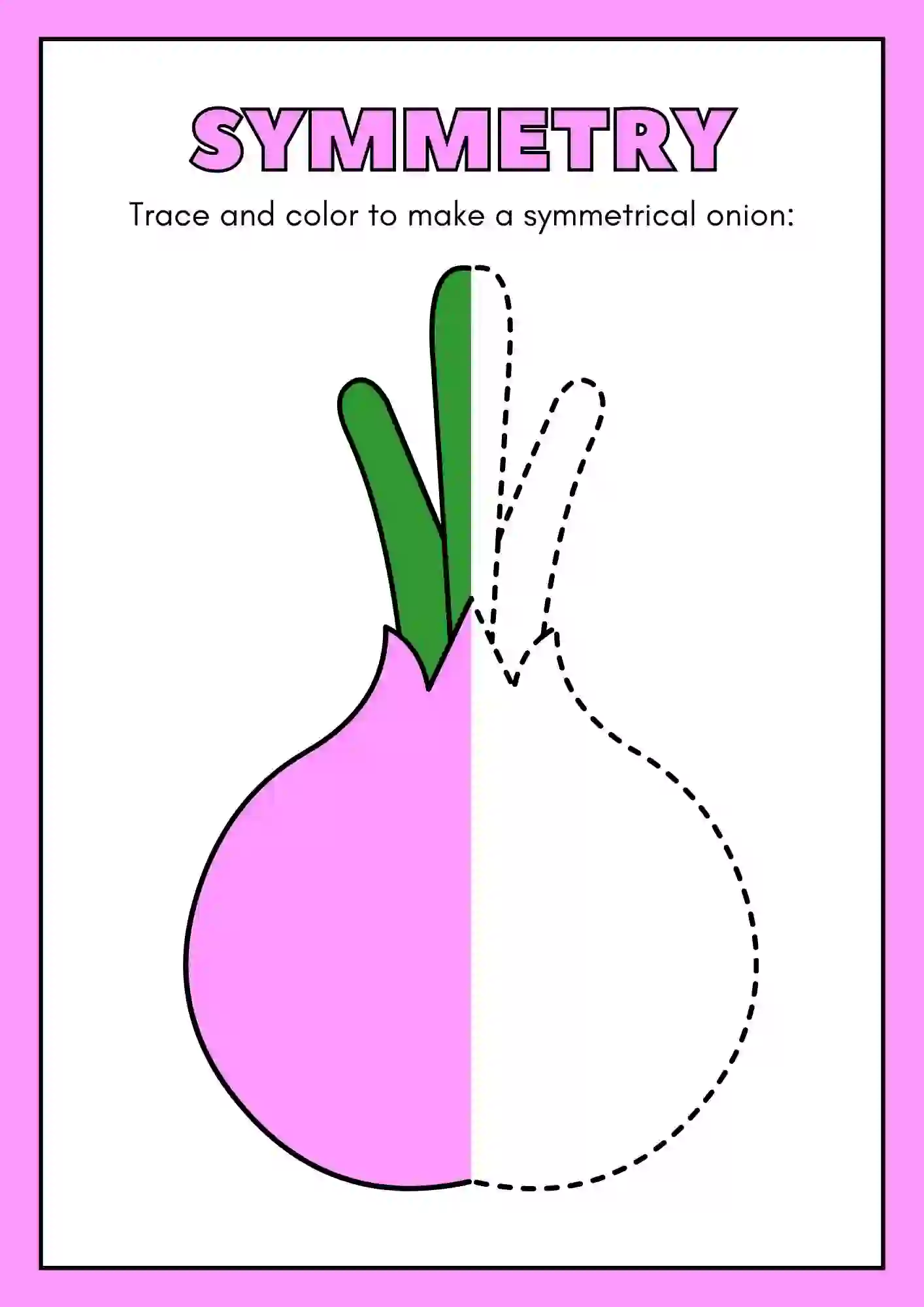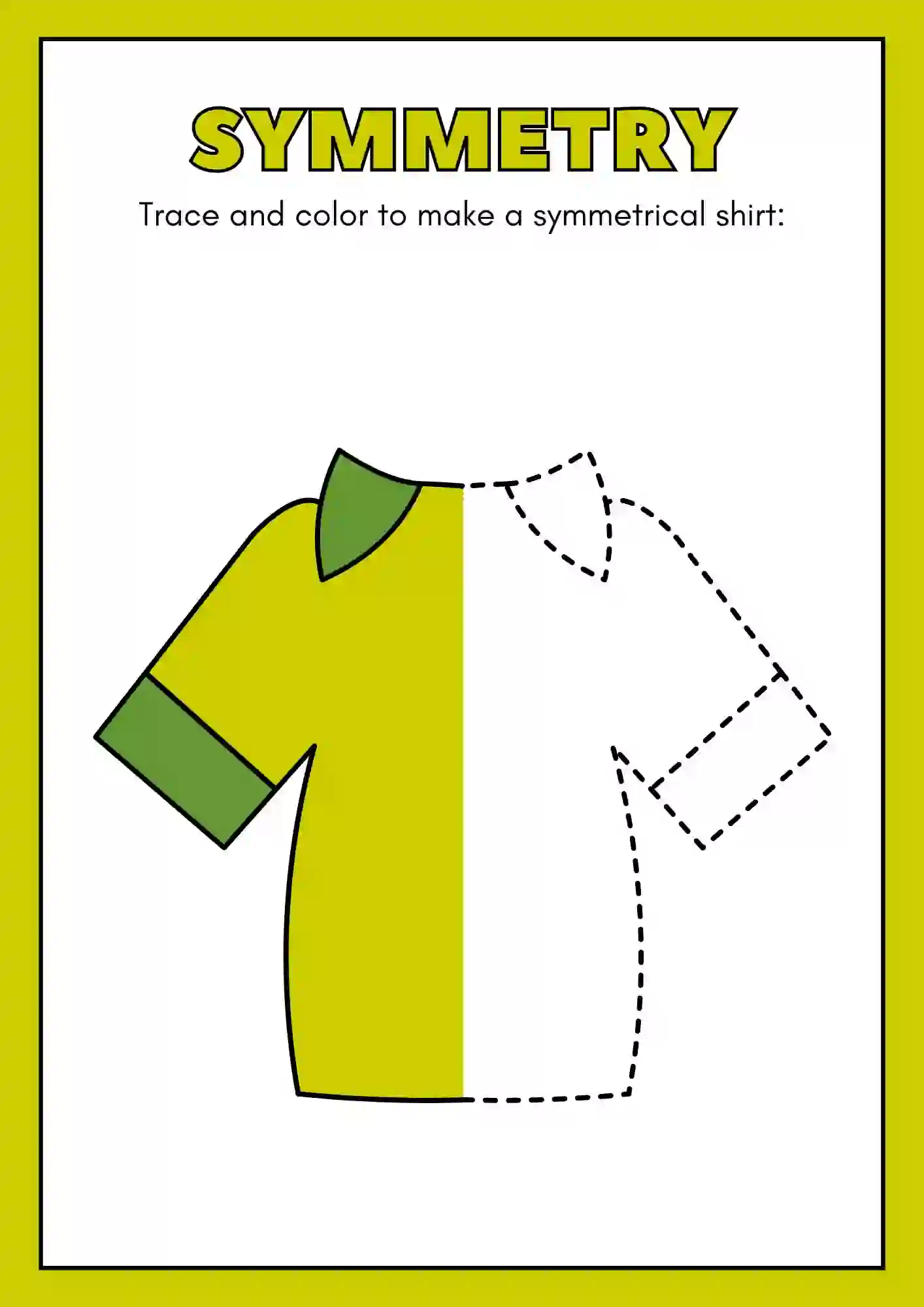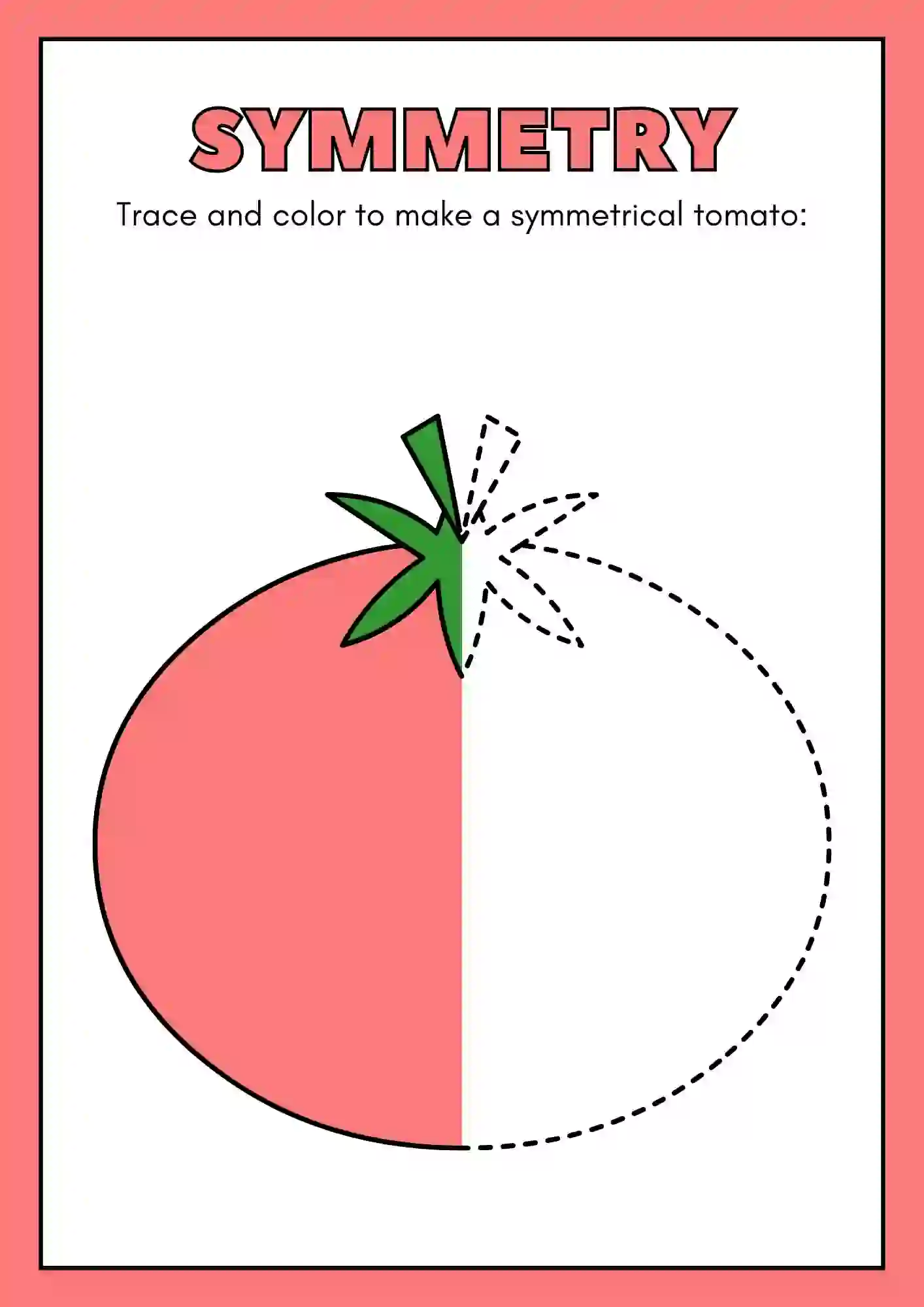Get ready to to color and trace with our Colorful Symmetry Drawing Worksheets. With 15 different worksheets to choose from, featuring cool things like teddy bears and watermelons,
Colorful Symmetry Drawing Worksheets Details:
| Feature | Details |
|---|---|
| Format | Downloadable PDF |
| Number of Pages | 15 |
| Content | Colorful Symmetry Drawing Worksheets for Kindergarten / Symmetry Drawing Worksheets for Kindergarten |
| Illustrations | Yes, playful and age-appropriate |
| Suitable For | Nursery, Lkg & Ukg |
| Printable? | Yes |
Learning Objectives:
- Getting to Know Symmetry: These Sheets will introduce the idea of symmetry. Basically, we’re showing kids things that look the same on both sides, like when you fold a paper and both sides match up perfectly.
- They Learn to Write: By working on these worksheets will help them with tasks like writing. We’ll be doing that by getting kids to trace and color different shapes and patterns.
- Figuring out where things fit: Then we are helping kids understand space better. They’ll be spotting symmetrical shapes and patterns within the drawings, which is about getting a sense of how things fit together in the world around us.
Who is this for?: These Worksheets are suitable for the children in LKG, UKG, Nursery, preschool, and kindergarten, providing adaptable activities suitable for learning.
Materials Needed: To embark on this artistic journey, gather the following materials:
- Printed Copies of the Worksheets: Printed Copies of Colorful Symmetry Drawing Worksheets, each featuring a different object for exploration.
- Coloring Materials: Prepare crayons, markers, or colored pencils.
- Tracing Tools: Provide pencils or markers for tracing the symmetrical halves of each object.
How to Use:
- Introduction to Symmetry: Start by talking about symmetry. Tell them it is about balancing things, like a butterfly’s wings being the same on both sides. You can show the kids how if you cut something right down the middle, both sides look exactly the same.
- Practice: Give them a chance to try it out. Pick one of the worksheets and show them how to trace and color just one side of the object. Make sure they understand how important it is to be careful and pay attention to the little details.
- Go Further: Now, it’s their turn to do it on their own. Let them choose any of the other worksheets de desire and have fun tracing and coloring both sides of each object.
- Chat Later: If they’re done, Ask them to share their drawings and talk about how it felt to make things symmetrical through art.
Tips:
- Using Pictures: To help to get more ideas about symmetry better, you can use pictures like mirrors or posters that show symmetry in action.
- Showing How: Sometimes, it helps to show different ways to color and shade. For example, blending colors together or layering them can make drawings look more interesting and realistic.
- Working Together: It’s good if we allow two or kids to do these worksheets together. This way, they can help each other out and learn from one another while drawing symmetrical pictures together.
- Extra Stuff: For kids who find symmetry easy, you can give them extra things to do. Like letting them make their own symmetrical drawings or going outside to find symmetry in nature and buildings.
Additional Activities:
- Finding Symmetry: Look around your classroom, home or outside for things that are symmetrical, like Butterflies, leaves, buildings, or even your own hands.
- Symmetrical Collage: Grab some magazines or photos and cut out symmetrical shapes. Then, arrange them to make a big, beautiful collage.
- Find Symmetry in Nature: Take a walk outside and see what you can find! Look closely at plants, flowers, and bugs. You’ll be surprised how many symmetrical patterns nature has to offer. Take pictures and make them draw what they see.
Download the PDF File Here:
Click To Download The Colorful Symmetry Drawing Worksheets PDF
How to Print:
- Get the PDF: Start by clicking the link to download the PDF files of the worksheets.
- Set up Printing: Make sure your printer is all setup. You can adjust the settings like paper size, whether it’s portrait or landscape, and how clear you want the print to be.
- Check Before You Print: Take a print preview. To make sure everything looks just right before you hit print.
- Print: Once you’re happy with how it looks, go ahead and hit that print button.
Tips for Parents and Educators:
- Encourage experimentation with colors and shapes and reassure children that it’s okay to create without worrying about perfection.
- When a child completes a drawing or painting, it’s important to give them feedback that’s positive and encouraging. Even if their artwork is just scribbles, take the time to let them know that you appreciate their effort and creativity. This can help boost their confidence and motivate them to keep creating in the future.
- Consider creating a designated area in your home or classroom to showcase your child’s artwork. This will inspire them to continue developing their creativity and feel proud of their accomplishments.
Common Mistakes and Solutions:
- Uneven Coloring: Children may face difficulty in coloring neatly or maintaining even coloring. In such cases, it is recommended to remind them to take their time and practice. You can also show them how to hold the crayon or pencil correctly and how much pressure to apply for smooth coloring. This can help them improve their coloring skills.
- Lack of Confidence: Some children may lack confidence in their drawing abilities. To help boost their confidence, it’s important to provide them with lots of encouragement. Tell them that expressing themselves is what matters most, not being perfect.
- Difficulty with Tracing: Tracing can be difficult, especially when it comes to straight lines. What can you do? Guide them or use templates to help them get comfortable. As they get better, they can try freehand tracing.
Love from LkgWorksheets!















